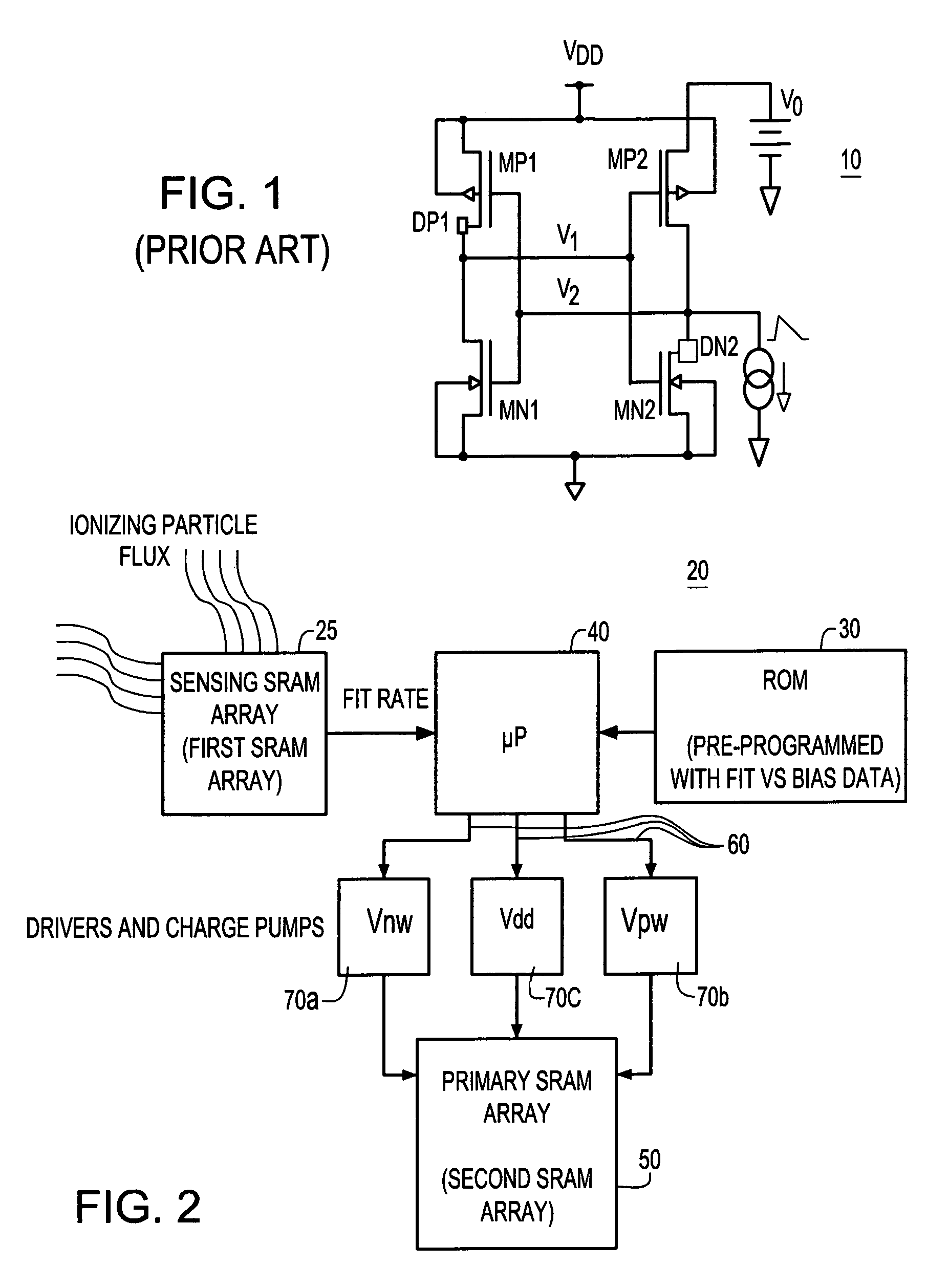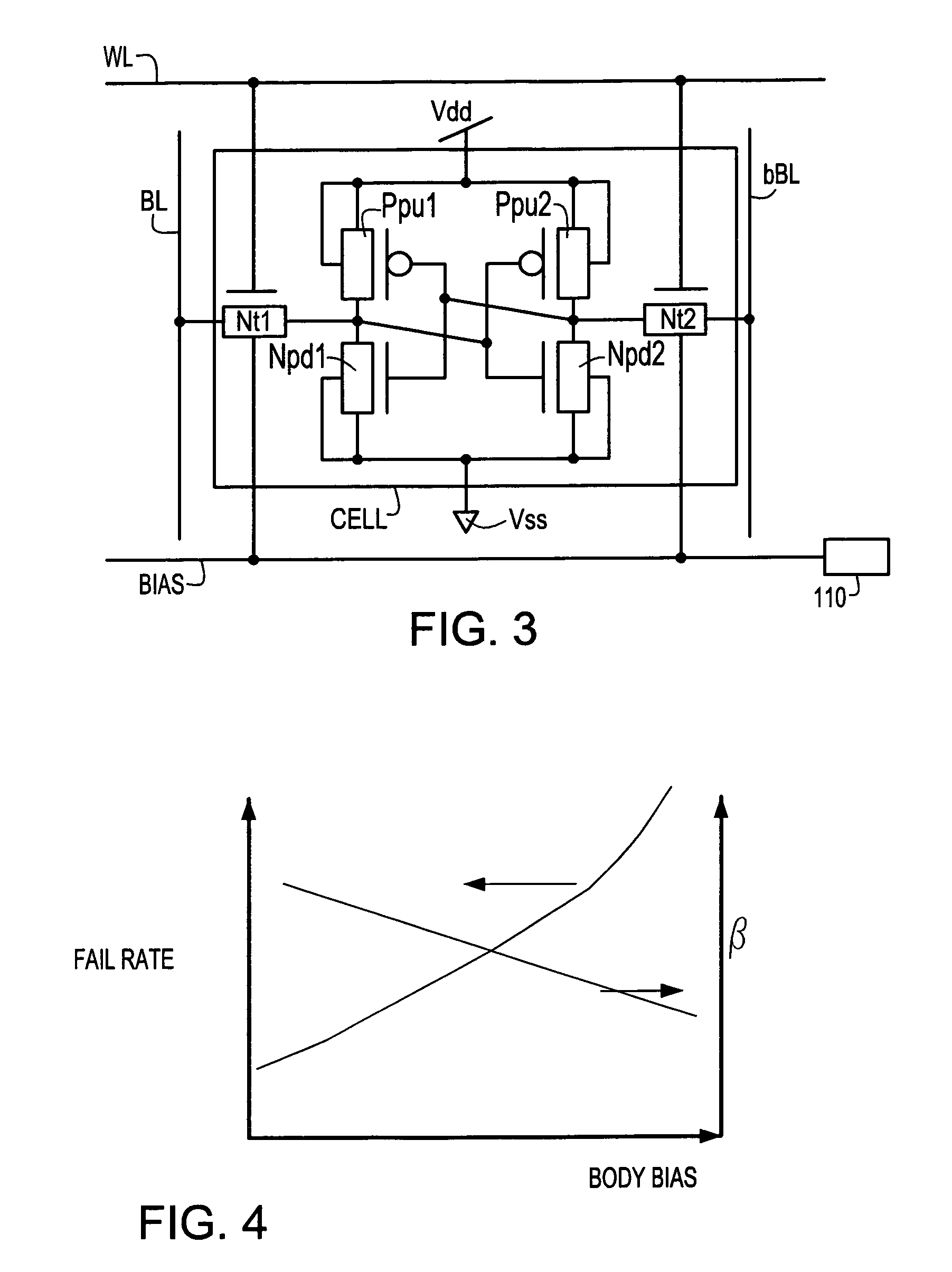Real-time adaptive SRAM array for high SEU immunity
a real-time adaptive, seu-adjustable technology, applied in static storage, digital storage, instruments, etc., can solve the problems of array access times, overkill design approach taken by the industry to provide acceptable seu-adjustable immunity, etc., and achieve the effect of maximizing cell performan
- Summary
- Abstract
- Description
- Claims
- Application Information
AI Technical Summary
Benefits of technology
Problems solved by technology
Method used
Image
Examples
Embodiment Construction
[0043]The present invention provides a system and method for automatically adjusting one or more electrical parameters in memory, e.g., SRAM arrays, and more particularly, a novel system and method for setting the SEU sensitivity of a primary SRAM memory array to a predetermined fail rate in an ionizing particle environment. The predetermined fail rate is maintained on a real-time basis in order to provide immunity to SEU consistent with optimum performance.
[0044]A block diagram of the inventive system 20 is illustrated in FIG. 2. As shown in FIG. 2, a first SRAM memory array 25 (sensing sub-array) is provided for the purpose of collecting accelerated SEU data from its interaction with the particles in the ionizing particle flux environment. The above-mentioned SEU data is then applied to a reliability algorithm for determining the electrical operating conditions required to obtain a predetermined SEU fail rate for a second (primary) SRAM array 50. The reliability algorithm determin...
PUM
 Login to View More
Login to View More Abstract
Description
Claims
Application Information
 Login to View More
Login to View More - R&D
- Intellectual Property
- Life Sciences
- Materials
- Tech Scout
- Unparalleled Data Quality
- Higher Quality Content
- 60% Fewer Hallucinations
Browse by: Latest US Patents, China's latest patents, Technical Efficacy Thesaurus, Application Domain, Technology Topic, Popular Technical Reports.
© 2025 PatSnap. All rights reserved.Legal|Privacy policy|Modern Slavery Act Transparency Statement|Sitemap|About US| Contact US: help@patsnap.com



